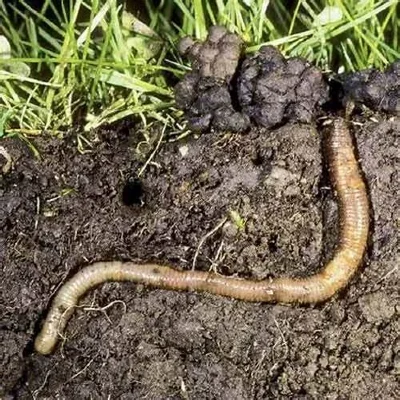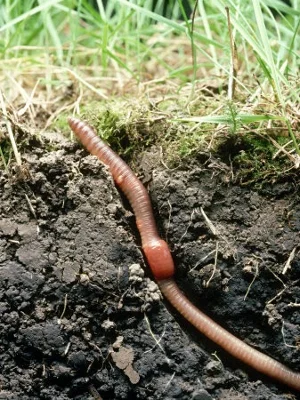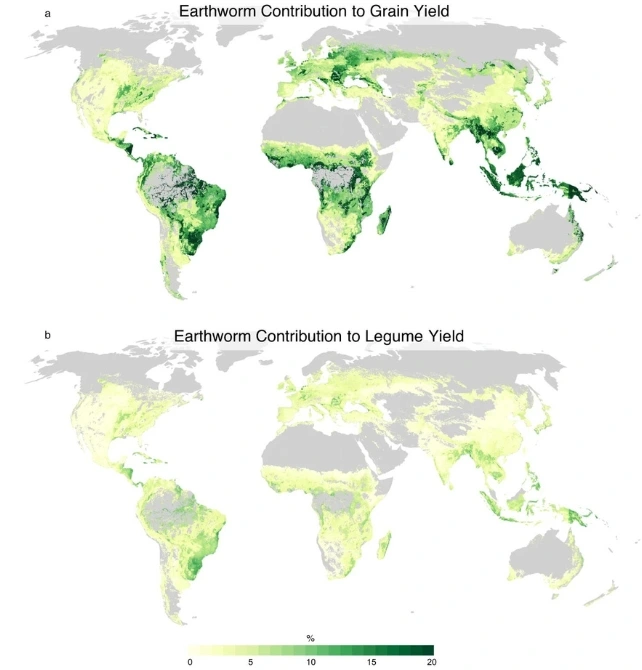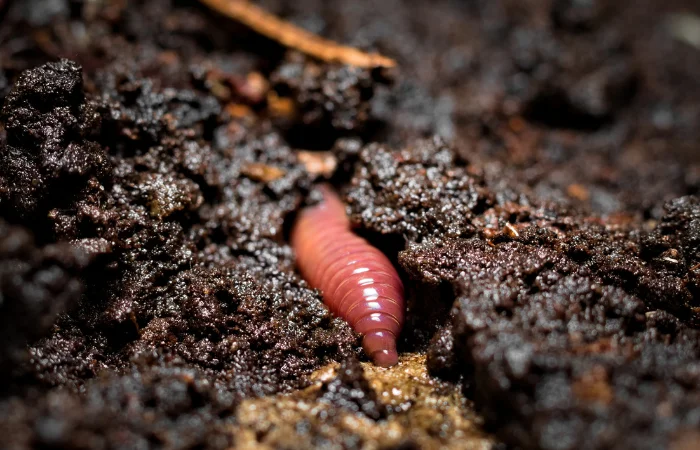Gardeners have long appreciated the value of earthworms in nurturing the soil. Recent research has unveiled the global significance of these small creatures, emphasizing their contribution to world food production and the urgency to safeguard them.
A study disclosed in the Nature Communications journal on Tuesday highlights that earthworms are pivotal in influencing over six percent of global grain output annually due to their indispensable function within soil ecosystems.
These wriggly creatures expedite the decomposition of dead plant materials, liberating essential nutrients for plant growth. The intricate network of tunnels they create not only fosters root growth but also equips plants with enhanced defenses against prevalent soil-borne diseases.

Two images of worms in a cross-section, allowing us to see their helpful tunnels.

However, the modern era’s aggressive agricultural practices loaded with chemicals endanger these vital creatures, warn researchers.
The team behind the study meticulously examined earthworm population maps, soil characteristics, crop yields, and previous research on plant productivity to quantify the impact of earthworms on the global yield of principal crops.
The term “contribution” was demarcated as the yield portion directly attributed to the activities of earthworms.
Their analysis deduced that earthworms could be instrumental in influencing approximately 6.5 percent of global grain output, encompassing essential foods like wheat, rice, corn, and barley.
“The actual contribution might surpass our estimates,” stated Steven Fonte, Associate Professor at Colorado State University, USA, and a co-contributor to the research. He emphasized that due to inadequate research and funding in the global south, the numbers of earthworms might be substantially underestimated, especially in tropical regions.
Furthermore, the research ascertained that earthworms also had a hand in contributing to 2.3 percent of the worldwide production of legumes – a category comprising peas, lentils, chickpeas, soybeans, and alfalfa. The cumulative annual yield owing to earthworms was gauged to be more than 140 million metric tons.
The illustrative maps below showcase the relative yield contributions of earthworms towards cereal grains and legumes. Regions shaded darker green signaled stronger estimated influences of earthworms.

The authors of the study proclaimed this as one of the pioneering efforts to numerically define the role of a beneficial soil organism in the realm of global agriculture.
However, they recognized a considerable sampling bias as most data points stemmed from Europe and North America. Despite this limitation, it became evident that earthworms had a pronounced impact in the global south, accounting for about 10 percent of total grain yield in sub-Saharan Africa and approximately eight percent in Latin America and the Caribbean.
This pronounced impact in these regions was linked to their soils, which are typically more acidic, rich in clay, and less tainted by fertilizers, accentuating the role of earthworms in plant development.
Conversely, in Europe and regions of East/Southeast Asia, over seven percent of grain yield was ascribed to the proactive presence of earthworms due to their abundant numbers and soil acidity.
In contrast, their influence was more subdued in regions with fewer earthworm populations and rampant usage of inorganic fertilizers.
To foster a sustainable agricultural sector, the researchers advocate for policies bolstering earthworm populations and overall soil biodiversity. Concrete steps might encompass the reduction of tillage, minimization of harmful pesticide usage, and amplification of organic inputs like manure and compost.
Fonte encapsulated the sentiment, stating, “Soils house nearly half of the planet’s biodiversity, making them a linchpin in global conservation endeavors.”
More To Discover
- Facing the Vital Role of Weevils as Pollinators: The Unsung Heroes of Plant Fertilization
- Moths: The Unsung Heroes of Night-Time Pollination
- How To Set Up a Worm Bin in Your Apartment and the Reasons You Should
- Is Your Compost or Worm Bin Churning Out More Compost Than You Can Use And You Don’t Know What To Do With it?
Conserving Earthworms: 8 Strategies for a Sustainable Ecosystem
Earthworms play a critical role in maintaining soil health and supporting agricultural productivity. Their indispensable activities in the soil not only ensure that plants have the necessary nutrients for growth, but also fortify plant defenses against pathogens.
With the realization of their profound impact on global food production, there’s a pressing need to adopt strategies that will conserve and promote the thriving of these invaluable creatures. Here are eight comprehensive approaches:
- Organic Farming Practices
- Organic farming reduces the use of synthetic pesticides and fertilizers that are harmful to earthworms. By choosing natural and organic methods, the soil maintains its ecological balance, promoting earthworm activity.
- Reduced Tillage
- Traditional tilling can disrupt earthworm habitats and reduce their numbers. Adopting conservation tillage or no-till farming practices helps preserve the natural habitat of earthworms.
- Incorporate Organic Matter
- Regularly adding organic materials such as compost, manure, or mulch can enhance the soil’s organic content, providing earthworms with a rich source of food.
- Limit Chemical Use
- Excessive use of pesticides and herbicides can be detrimental to earthworm populations. Opting for natural alternatives or reducing the frequency of chemical application can mitigate their adverse effects.
- Crop Rotation
- Implementing a crop rotation system can prevent soil-borne diseases and pests, reducing the need for chemical treatments and creating a favorable environment for earthworms.
- Use of Earthworm-friendly Fertilizers
- Some fertilizers can be toxic to earthworms. Utilizing earthworm-friendly or organic fertilizers can ensure that they flourish.
- Educate Farmers and Gardeners
- Spreading awareness about the benefits of earthworms and teaching sustainable farming practices can go a long way in ensuring their conservation.
- Support Research
- More research can provide insights into the behaviors, requirements, and challenges faced by earthworm populations. Supporting such initiatives can guide better conservation strategies.



















